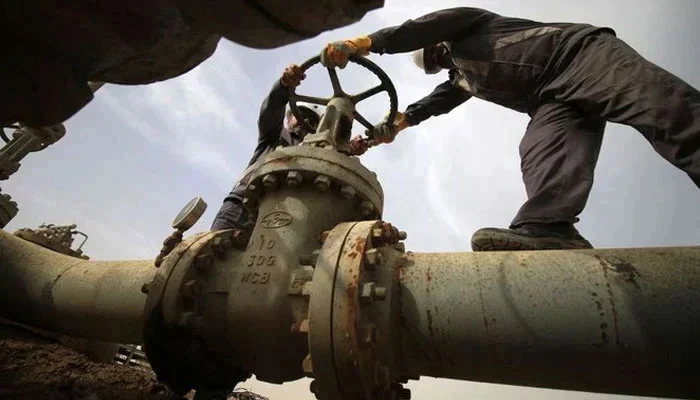“According to a USAID study, Pakistan is estimated to possess more than 3,000 trillion cubic feet (TCF) of shale gas resources across various shale horizons.”
Amidst an annual decline in natural gas production by 8-9 percent, Pakistan has shown promising signs of substantial shale gas reserves at the KUC-1 pilot well in Hyderabad, Sindh, initiated by the Oil and Gas Development Company Limited (OGDCL) in 2020. According to a USAID study, Pakistan possesses over 3,000 trillion cubic feet (TCF) of shale gas resources in various shale horizons.
Dr. M Saeed Khan Jadoon, adviser to OGDCL on oil and gas exploration and head of the shale gas cell, shared details of the discovery. The well has been vertically drilled, revealing two shale gas-containing rock layers. OGDCL experts plan to drill vertically through a third layer next month. The analysis after fracking the first two layers indicated the presence of abundant shale gas. Subsequently, the plan is to horizontally drill the same well to a depth of 1,500-2,000 meters within a total depth range of 3,000-6,000 meters.
For fracking the vertical and horizontal layers, OGDCL has signed an agreement with Schlumberger, Pakistan.
Jadoon highlighted OGDCL’s efforts to enhance the capacity of human resources in the shale gas cell, including sending members to China and the USA to stay updated on shale gas exploration developments. Both the USA and China have made significant investments in shale gas exploration.
The horizontal drilling phase in the pilot well is set to begin in three months and could conclude by August 2024. The entire vertical and horizontal drilling process is expected to take 3-4 years at an estimated cost of $25 million to $30 million, considering delays caused by COVID-19 and floods. Following this, OGDCL intends to attract investors based on the data collected from fracking activities to assess the commercial viability of shale gas.
Dr. Jadoon emphasized that recovering shale gas commercially is a capital-intensive endeavor, with a discovery cost of $10-15 per million British thermal units (mmBtu). OGDCL aims to provide investors with the actual production potential of shale gas reservoirs in Pakistan after the successful completion of the pilot well. If successful, this pilot well may lead to the drilling of more pilot wells to assess shale gas productivity in different regions.
The Sember Shale is recognized as the richest source rock with good thickness and is predominantly found in the lower and middle Indus Basin of Pakistan. OGDCL currently contributes significantly to oil and gas production in Pakistan, saving billions of dollars and generating substantial revenue for the country.
While Pakistan continues to import oil and gas to meet its demand, the exploration and development of shale gas reserves have the potential to enhance domestic energy production and reduce dependency on imports.



